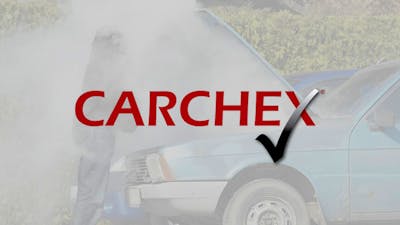How Much Does It Cost For AC Recharge?
One of the most controversial maintenance and repairs you can do with your automobile is an air conditioning system recharge. The reason is that if the original refrigerant is gone, how did it escape, and will a recharge simply put more refrigerant gas right back into the atmosphere through the same leak path? We will address that and more in this story on the cost of an AC recharge for your car. We know you are sitting sweating inside a hot car, so we will not force you to read the rest of this story before we say that an AC recharge usually costs about $250 to $500, if your shop will do it.
Popular Warranty Providers
What is an AC Recharge?
Your vehicle’s air conditioning system is made up of multiple components and a long run of piping that works together to cool your cabin. The system works much like the one in your home and is based on the same basic principle as the system that cools your refrigerator. Those systems rarely need a recharge, if ever, but automobile systems frequently do. Why? The reason is that your car’s AC system is subjected to extremes of heat and cold coupled with constant vibration and harsh chemicals like road salt that conspire to open up a tiny pinhole out of which your refrigerant can do the chicken run.
How Will I Know If My AC Needs to Be Recharged?
Your AC system is under pressure. When a small pinhole appears, the refrigerant gas will leak out. You may notice your AC is not as cold as it was when you first got the car. Or, one hot afternoon, you may have an AC that blows at the same temperature as the ambient air. If this happens, you may be low or out of refrigerant gas. We recommend having an experienced mechanic do a full and proper diagnosis.
How is an AC Recharge Properly Performed?
The correct way to do an AC recharge is for a mechanic or technician with specialized AC system training to first try to determine if a large leak has occurred and, if so, where the leak is. The mechanic will use special tools and gauges to pull a vacuum on the system and try to determine if the system is sound. If it is, the system can be recharged. If it is not, the system should be repaired before the system is recharged. That can be very costly.
How is an AC Recharge Performed?
We’ve explained the right way to do the job, but there is also another way. The mechanic can introduce more of the proper refrigerant gas under pressure to bring the total system pressure up to the specified amount. Assuming there is no big leak, this will make your AC run cool again, and it is not very expensive. However, if there is a large leak, the refrigerant gas will simply escape, and you will be back to the starting point.
Why Not Try Recharging the AC and See What Happens?
Refrigerant gasses are regulated by Big Brother. And for good reason. They can be harmful to the environment. They are also expensive, and depending on the particular refrigerant, they may also be in limited supply. Nobody wants to waste this gas and see it enter the atmosphere we rely on to shield us from the sun. So, one school of thought is that a simple recharge should not be performed because if the gas gets out once, it will get out again.
The Practical AC Recharge in the Real World
We understand the theory that the leak should be identified and repaired before more refrigerant is introduced. However, in the real world, an AC recharge works more often than not. And it can result in an AC system that will work for many years. Your author’s 2016 Subaru Forester required an AC recharge shortly after it was purchased new. The dealer performed an AC recharge (without fixing anything), and the AC system worked perfectly for the following four years before the vehicle was traded away. So, AC recharges do often succeed.
How Long Will a Successful AC Recharge Last?
There is no way to know how long an AC recharge will last, but it can be multiple years. It will usually last long enough for you to trade in a car or sell it (wink, nod, you didn’t hear that from us, understand?).
Old Car AC System Recharges
In the good old days, we had some crackerjacks of refrigerant gasses. Once universally called by the popular brand name “Freon,” these gasses were outstanding at cooling system work. However, the scientists among us determined (correctly) that these gasses were harming the atmosphere in a way that should be stopped. And so we started using ever less damaging refrigerant gasses in all our cooling systems, cars included. And it worked. The atmosphere healed up nicely.
The reason we are going into this history of the ozone layer for beginners is that if you have an old car that was designed to run on one of the magical early gasses, you may need to have the system converted to accept a gas that is presently approved for use. That is a bigger job than a simple “recharge.” It is more costly, and in this case, finding and resolving the original leak makes more sense. Add a 1 to the front of the estimate we provided in the first paragraph to get the approximate cost. If the car is really old and not a classic or specialty car, you may want to consider the option of calling it your mobile sauna and rocking a bit of extra Arrid Extra Dry.
Who Can Perform a Recharge On My Car’s AC System?
Most shops can do AC work. Any dealer can. The only real risk is that an unqualified technician could mess the job up, do more harm than good, and release refrigerant gas into the atmosphere. If you use a dealer, expect the cost to be about 25% higher than if you use a local shop.
Can I Do My Own AC Recharge?
We’re betting the folks who are capable of doing their own AC recharge are not reading this but are presently under a hood with a set of blue and red AC gauges and connectors. While not the most technically challenging job, we hope that our readers will let a qualified technician or mechanic do AC work on their car. This is one of those jobs that, as good citizens, we want to be done without the possibility of environmental contamination. Our public service announcement is now complete, we will tell you that AC recharge kits can be bought anywhere you get your car parts or online for under $50. Just keep in mind, if you input the wrong kind of refrigerant or over-pressurize the system, you are looking at a much larger problem to pay for.
Read more on the topic of Car Owning here.





















